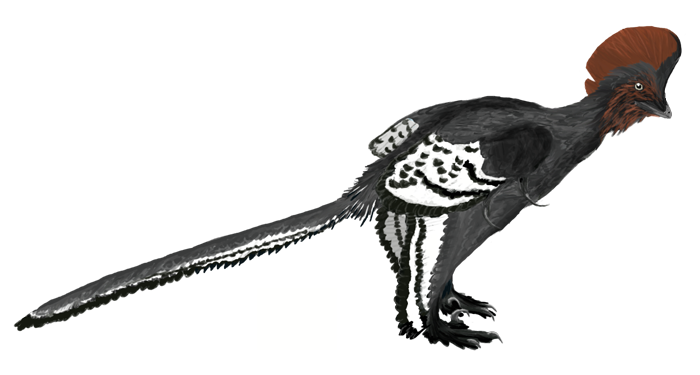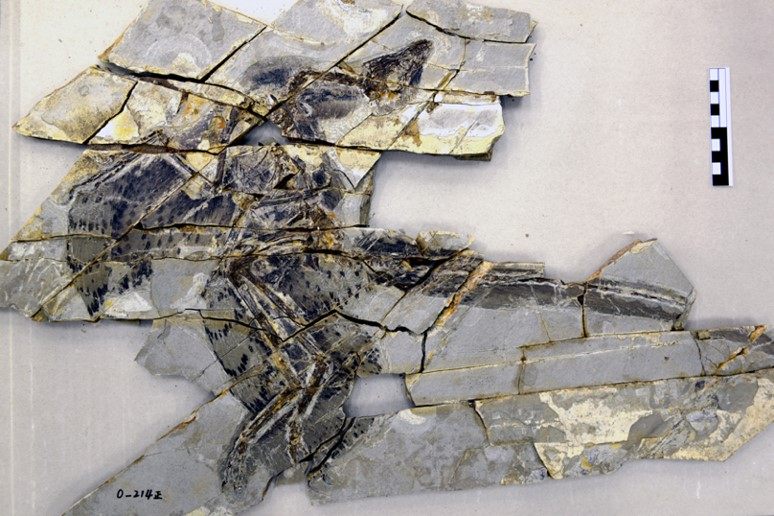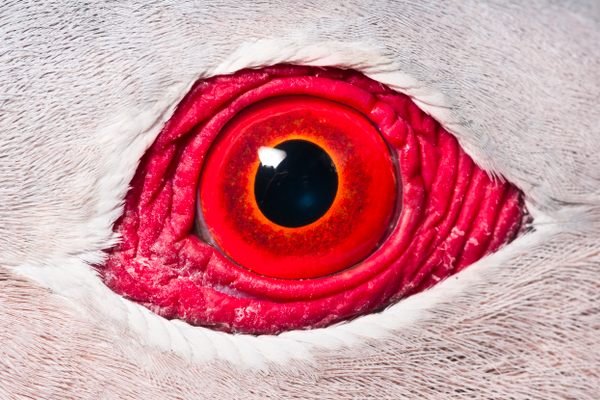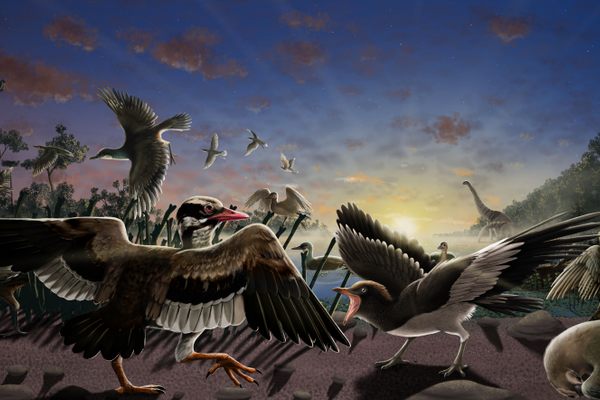This Dinosaur’s Feathers Are an Evolutionary Mystery
They offer conflicting clues as to whether or not it could fly.

Meet Anchiornis. A one-foot-tall, four-winged, 160-million-year-old redhead from present-day China, this dinosaur was a close precursor to modern birds, down to its chicken-like feet. Like many other dinosaurs found in China, it also had “boatloads of feathers,” says Mary Schweitzer, a paleontologist at North Carolina State University. The first bird, Archaeopteryx, emerged almost 10 million years later, but Anchiornis’s wealth of feathers made researchers wonder whether it could fly anyway. (Pterosaurs, for what it’s worth, weren’t actually dinosaurs.)
Flight is an “expensive” capability, says Schweitzer. There has to be a lot of “evolutionary reason” to justify it, so the discovery of feathered dinosaurs did not automatically indicate that these species could fly. New research published in the Proceedings of the National Academy of Sciences set out to determine whether Anchiornis could. The answer is complicated.
High-resolution electron microscopy of fossilized Anchiornis feathers revealed the presence of both beta-keratin (β-keratin) and alpha-keratin (ɑ-keratin) within these dinosaurs’ plumages. This co-expression showed what a difference 10 million years can make: Modern bird feathers contain only small amounts of ɑ-keratin, and for good reason. Its filaments are about 10 nanometers in diameter, says Schweitzer, a co-author of the new study, while β-keratin’s filaments are only about three nanometers across. It’s not hard to see why birds, as they evolved toward flight, ended up carrying proteins one third as large as those that make up our hair, skin, and nails.

But it’s not that simple. The particular kind of β-keratin found in Anchiornis’s feathers, says Schweitzer, is consistent with that found in modern, flying feathers. One β-keratin is not necessarily like another: At some point, she says, a “deletion event” took place in which the protein had a chunk cut off from it, losing amino acids that made it more brittle. The keratin became more flexible, and thus more conducive to flight. Somehow, Anchiornis sports both the post-deletion β-keratins of its flying descendants along with the ɑ-keratins reserved for those of us stranded on land and in water.
So could Anchiornis fly? It’s not really clear, and if so, it’s also not really clear what that would have looked like. What the study does tell us, explains a press release, is that β-keratin’s pro-flight deletion event took place earlier than previously estimated. Molecular fossil data, says Schweitzer in the release, can help “root molecular clocks and improve their accuracy,” and can help us get a more complete, if more complicated, sense of how feathers evolved to fly.
From healthy hair, to majestic flight, to defensive slime, it really is all in the keratin.















Follow us on Twitter to get the latest on the world's hidden wonders.
Like us on Facebook to get the latest on the world's hidden wonders.
Follow us on Twitter Like us on Facebook